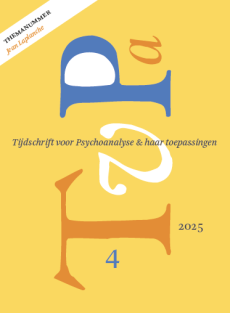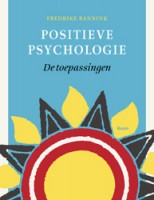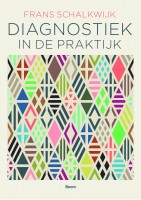Objectrelaties bij depressies
Summary
Object-relations and depression Clinical implications of theory and research
Relatively little is known about the relevance of object-relational functioning in the treatment of depression. The aim of this paper is to explore the predictive value of object-relational functioning (orf) for therapeutic alliance and the outcome of short-term psychoanalytic supportive psychotherapy. The orf of eighty-one depressed patients was rated by using the Developmental Profile. Therapeutic alliance was assessed with Luborskys Helping Alliance Questionnaire. Patients with a recurrent depression showed less mature levels of orf, and especially symbiotic problems. The overall maturity of orf was related to success of treatment although the predictive value appeared to be modest. No association was found between orf and the early therapeutic alliance. Potential theoretical and clinical implications of these findings are discussed.
Literatuur
- Abraham R.E. (1997). Het Ontwikkelingsprofiel Een psychodynamische diagnose van de persoonlijkheid. Assen: Van Gorcum.
- Abraham, R.E., van, H.L., Ingenhoven, Th. e.a. (2001). The Developmental profile. Journal of Personality Disorders, 15, 457-473.
- Bagby, R., Ryder, A., Schuller, D. e.a. (2004). The Hamilton Depression Rating Scale: Has the gold standard become a lead weight? American Journal of Psychiatry, 161, 2163-2177.
- Beretta, V., Despland, J., Drapeau, M. e.a. (2007). Are relationships patterns with significant others re-enacted with the therapist? A study of early transference reactions. Journal of Nervous and Mental Disorders, 195, 443-450.
- Blank, R. & Blank, G. (1986). Beyond ego psychology Developmental and object relations theory. New York: Columbia University Press.
- Bond, M. (2004). Empirical studies of defense style Relationship with psychopathology and change. Harvard Review of Psychiatry, 12, 263-278.
- Busch, F., Rudden, M. & Shapiro, Th. (2004). Psychodynamic treatment of depression. Washington dc: American Psychiatric Publishing, Inc.
- Cuijpers, P., Straten, A. van, Warmerdam, L. & Andersson, G. (2008). Psychological treatment of depression: a meta-analytic database of randomized studies. BioMed Central Psychiatry, 8, 36.
- Dam, Q. van & Abraham, R. (2003). Indicatiestelling voor psychoanalyse en het Ontwikkelingsprofiel. Tijdschrift voor Psychoanalyse, 9, 192-207.
- Diener, M.J., Hilsenroth, M.J. & Weinberger, J. (2007). Therapist affect focus and patient outcomes in psychodynamic psychotherapy A meta-analysis. American Journal of Psychiatry, 164, 936-941.
- Freud, S. (1917). Rouw en melancholie. Sigmund Freud Nederlandse Editie: Psychoanalytische theorie 1 (p. 73-91). Amsterdam: Boom.
- Hawley, L.L., Ringo Ho, M.H., Zuroff, D.C. e.a. (2007). Stress reactivity following brief treatment for depression: differential effects of psychotherapy and medication. Journal of Consultation and Clinical Psychology, 75, 244-256.
- Hendriksen, M., Schoevers, R., van, H.L., Jonghe, F. de & Dekker, J. (ingediend). Therapist evaluation of personality structure and therapeutic technique related to outcome in psychoanalytic psychotherapy for depression.
- Hogland, P., Bogwald, K., Amlo, S. e.a. (2008). Transference interpretations in dynamic psychotherapy: do they really yield sustained effects? American Journal of Psychiatry, 165, 763-771.
- Huprich S.K. & Greenberg, R.P. (2003). Advances in the assessment of object relations in the 1990s. Clinical Psychology Review, 23, 665-698.
- Jacobson, N. & Truax, P. (1991). Clinical significance A statistical approach to defining meaningful change in psychotherapy research. Journal of Consultation and Clinical Psychology, 59, 12-19.
- Joiner, T., Metalsky, G., Katz, J. e.a. (1999). Depression and excessive reassurance-seeking. Psychological Inquiry, 10, 269-278.
- Jonghe, F. de (2005). Kort en krachtig Kortdurende psychoanalytische steungevende psychotherapie. Amsterdam: Benecke
- Kessler, R.C., Berglund, P., Demler, O. e.a. (2003). The epidemiology of major depressive disorder Results from the National Comorbidity Survey Replication. Journal of the American Medical Association, 289, 3095-3105.
- Leichsenring, F., Rabung, S. & Leining, E. (2004). The efficacy of short-term psychodynamic psychotherapy in specific psychiatric disorders. Archives of General Psychiatry, 61, 1208-1216.
- Luborsky, L. & Luborsky, E. (2006). Research and psychotherapy The vital link. Lanham md: Rowman & Littlefield.
- Maat, S. de & Jonghe, F. de (2008). Over de effectiviteit van kpt. Tijdschrift voor Psychoanalyse, 14, 237-251.
- Martin, D., Garske, J. & Davis, K. (2000). Relation of the therapeutic alliance with outcome and other variables: a metaanalytic review. Journal of Consultation and Clinical Psychology, 68, 438-450.
- Molenaar, P., Dekker, J., van, H.L. e.a. (2006). Does adding psychotherapy to pharmacotherapy improve social functioning in the treatment of depression? Depression and Anxiety, 24, 553-562.
- Ormel, J., Oldehinkel, A.J. & Brilman, E. (2001). The interplay and etiological continuity of neuroticism, difficulties, and life events in the etiology of major and subsyndromal, first and recurrent depressive episodes in later life. American Journal of Psychiatry, 158, 885-891.
- Percevic, L., Lambert, J. & Kordy, H. (2006). What is the predictive value of responses to psychotherapy for its future course? Empirical explorations and consequences for outcome monitoring. Depression and Anxiety, 16, 364-374.
- Perry, J.C. & Hogland, P. (1998). Convergent and discriminant validity of overall defensive functioning. Journal of Nervous and Mental Disorders, 186, 529-535.
- Piper, W.E. & Duncan, S. (1999). Object relations theory and short-tem dynamic psychotherapy Findings from the Quality of Object Relations Scale. Clinical Psychology Review, 19, 669-685.
- Piper, W.E., Ogrodniczuk, J. & Joyce, A. (2004). Quality of object relations as a moderator of the relationship between pattern of alliance and outcome in short-term individual psychotherapy. Journal of Personality Assessment, 83, 345-356.
- Post, R. (1992). Transduction of psychosocial stress into the neurobiology of recurrent affective disorder. American Journal of Psychiatry, 149, 99-1010.
- Valbak, K. (2004). Suitability for psychoanalytic psychotherapy: A review. Acta Psychiatrica Scandinavica, 109, 164-178.
- Van, H.L. (2008). Exploring predictive factors in depression treatment The role of patient characteristics and psychodynamic diagnosis. Amsterdam VU, Academisch proefschrift.
- Van, H.L., Ingenhoven, T., Foeken, I. van e.a. (2000). Preliminary results on interrater reliability and construct validity of the Developmental Profile. Journal of Personality Disorders, 14, 360-365.
- Wallerstein, R. (2000). Forty-two lives in treatment A study of psychoanalysis and psychotherapy: the report of the Psychotherapy Research Project of the Menninger Foundation, 1954-1982. New York: Other Press.
- Zuroff, D.C., Mongrain, M. & Santor, D.A. (2004). Conceptualizing and measuring personality vulnerability to depression Comment on Coyne and Whiffen. Psychological Bulletin, 130, 489-511.
 © 2009-2025 Uitgeverij Boom Amsterdam
© 2009-2025 Uitgeverij Boom Amsterdam
ISSN 1382-516x
De artikelen uit de (online)tijdschriften van Uitgeverij Boom zijn auteursrechtelijk beschermd. U kunt er natuurlijk uit citeren (voorzien van een bronvermelding) maar voor reproductie in welke vorm dan ook moet toestemming aan de uitgever worden gevraagd:
Behoudens de in of krachtens de Auteurswet van 1912 gestelde uitzonderingen mag niets uit deze uitgave worden verveelvoudigd, opgeslagen in een geautomatiseerd gegevensbestand, of openbaar gemaakt, in enige vorm of op enige wijze, hetzij elektronisch, mechanisch door fotokopieën, opnamen of enig andere manier, zonder voorafgaande schriftelijke toestemming van de uitgever.
Voor zover het maken van kopieën uit deze uitgave is toegestaan op grond van artikelen 16h t/m 16m Auteurswet 1912 jo. Besluit van 27 november 2002, Stb 575, dient men de daarvoor wettelijk verschuldigde vergoeding te voldoen aan de Stichting Reprorecht te Hoofddorp (postbus 3060, 2130 KB, www.reprorecht.nl) of contact op te nemen met de uitgever voor het treffen van een rechtstreekse regeling in de zin van art. 16l, vijfde lid, Auteurswet 1912.
Voor het overnemen van gedeelte(n) uit deze uitgave in bloemlezingen, readers en andere compilatiewerken (artikel 16, Auteurswet 1912) kan men zich wenden tot de Stichting PRO (Stichting Publicatie- en Reproductierechten, postbus 3060, 2130 KB Hoofddorp, www.cedar.nl/pro).
No part of this book may be reproduced in any way whatsoever without the written permission of the publisher.
Nieuwsbrief Boom Psychologie
Meld u nu aan en ontvang maandelijks de Boom Psychologie nieuwsbrief met aantrekkelijke aanbiedingen en de nieuwe uitgaven.
Aanmelden


